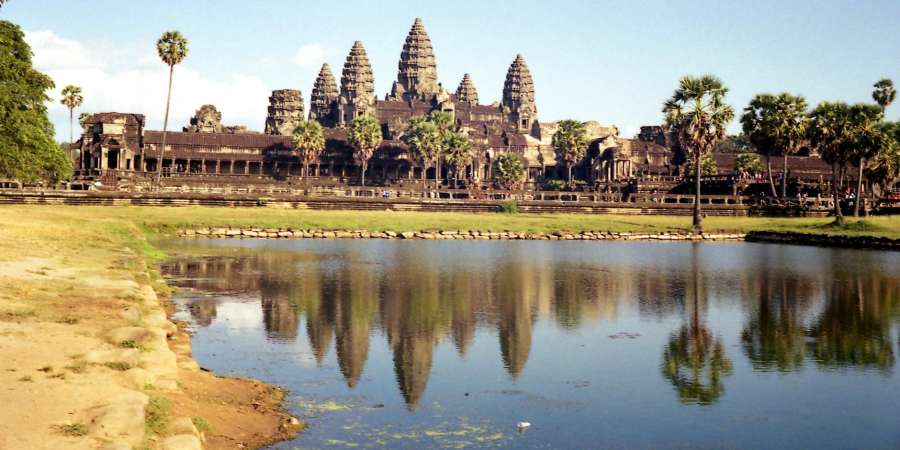

Angkor Wat is a Hindu and Buddhist temple complex in Cambodia. Guinness World Records considers it the world's largest religious edifice, situated on a 162.6-hectare site within the ancient Khmer capital city of Angkor.
Angkor is one of the most significant archaeological sites in Southeast Asia. Angkor Archaeological Park, which covers around 400 square kilometers and includes forested areas, has the spectacular remains of the Khmer Empire's various capitals from the ninth to the fifteenth centuries.
Construction is thought to have lasted about three decades. All of the original religious elements came from Hinduism, and the temple was dedicated to the god Vishnu. The five central towers of Angkor Wat represent the summits of Mount Meru, which according to Hindu mythology is the abode place of the gods.

Angkor Wat, in Siem Reap, Cambodia, is the world's biggest religious monument. Angkor Wat, translated from Khmer (Cambodia's national language), literally means "City Temple." In terms of names, this is about as generic as they get.
Angkor Wat is thought to have been erected as a Hindu temple dedicated to the god Vishnu. It was considered to symbolize Mount Meru, the Himalayan home of the gods in Hindu mythology. Over time, the Khmer people's religious beliefs altered, and the temple was turned into a Buddhist temple.
Suryavarman, the Khmer ruler, built the Angkor Wat temple in Yasodharapura, the Khmer Empire's capital, in the early 12th century.
India is restoring the Angkor Wat temple complex in Cambodia because our civilization is extended across countries rather than just India. External Affairs Minister S. Jaishankar on Sunday said
The main reason for Angkor's demise, according to Thai historians, was the Suphannaphum dynasty attack in 1431, which forced the Khmer to abandon Angkor and withdraw south-eastward. Some speculate that Champa soldiers from Southeast Asia sacked the city for its wealth.
The Chams of modern-day Vietnam had sacked Angkor Wat before he arrived to the kingdom in 1181. Jayavarman VII built a new Buddhist temple after believing that the Hindu gods had abandoned him. He reconstructed Angkor Wat, converting it into a Buddhist temple.
Without proper care, the buildings succumbed to consuming vegetation, eroding water, and other forces. In 1992, UNESCO declared Angkor as a World Heritage site and put it to the List of World Heritage in Danger.
Because the style of the original Angkor Wat was influenced by Dravidian architecture, with its distinctive storeyed towers, traditional South Indian temple builders are being employed for the project in Bihar..
Thanks For Reading…Do Support And Follow me
